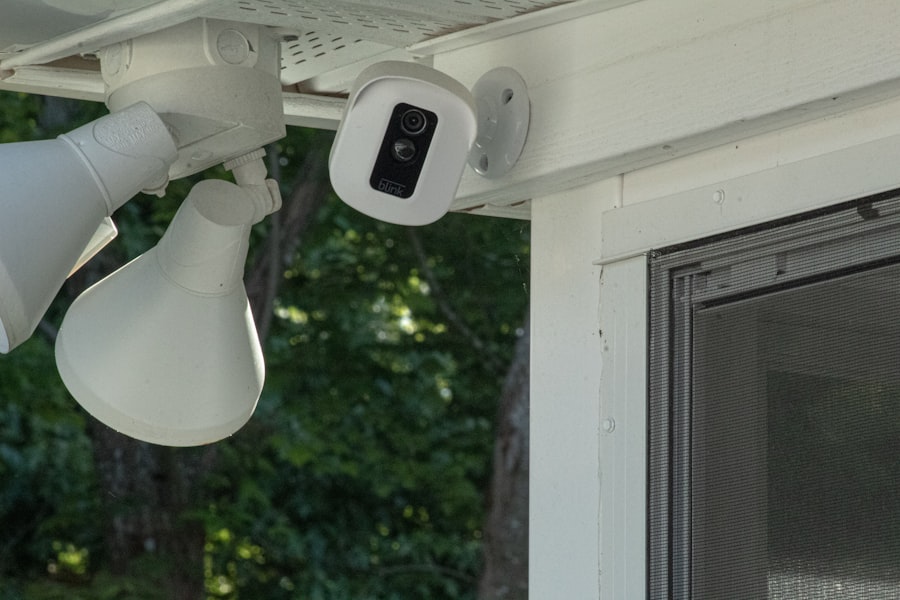The advent of artificial intelligence (AI) has revolutionized numerous sectors, and surveillance systems are no exception. Traditional surveillance methods, which often rely on human operators monitoring feeds from multiple cameras, are increasingly being supplemented or replaced by AI-powered systems. These advanced technologies utilize machine learning algorithms and computer vision to analyze video footage in real-time, enabling them to detect unusual activities, recognize faces, and even predict potential security threats.
The integration of AI into surveillance not only enhances the efficiency of monitoring but also significantly improves the accuracy of threat detection, thereby transforming how security is managed in various environments. AI-powered surveillance systems are designed to process vast amounts of data at speeds unattainable by human operators. This capability allows for continuous monitoring without the fatigue or distraction that can affect human vigilance.
Moreover, these systems can learn from past incidents, adapting their algorithms to improve their performance over time. As a result, organizations ranging from retail stores to critical infrastructure facilities are increasingly adopting AI-driven surveillance solutions to bolster their security measures and ensure a safer environment for employees and customers alike.
Key Takeaways
- AI-powered surveillance systems use advanced technology to improve accuracy and reduce false alarms in traditional surveillance systems.
- False alarms in traditional surveillance systems can lead to wasted resources and decreased effectiveness in detecting real threats.
- AI technology improves surveillance accuracy by using advanced algorithms to distinguish between true threats and false alarms.
- AI-powered surveillance systems reduce false alarms, leading to increased efficiency, cost savings, and improved security measures.
- Case studies show successful implementation of AI-powered surveillance systems in various industries, demonstrating their effectiveness in reducing false alarms and improving security measures.
The Problem of False Alarms in Traditional Surveillance Systems
One of the most significant challenges faced by traditional surveillance systems is the prevalence of false alarms. These erroneous alerts can arise from various sources, including environmental factors such as moving shadows, animals, or even changes in lighting conditions.
This phenomenon not only undermines the effectiveness of security operations but can also erode trust in the surveillance system itself. The consequences of false alarms extend beyond mere inconvenience; they can have serious implications for public safety and resource allocation. For instance, emergency services may be dispatched to investigate a perceived threat that turns out to be a false alarm, diverting attention from genuine emergencies.
Additionally, businesses may incur significant costs associated with responding to these alerts, including potential fines for repeated false alarms. As organizations strive to enhance their security protocols, addressing the issue of false alarms becomes paramount in ensuring that surveillance systems serve their intended purpose effectively.
How AI Technology is Improving Surveillance Accuracy

AI technology is fundamentally changing the landscape of surveillance by enhancing accuracy through advanced analytical capabilities. Machine learning algorithms can be trained on vast datasets to recognize patterns and distinguish between normal and suspicious behavior. For example, an AI system can learn to identify specific actions that typically precede a security breach, such as loitering or unauthorized access attempts.
By continuously analyzing video feeds and comparing them against learned behaviors, these systems can significantly reduce the incidence of false alarms. Moreover, computer vision technology enables AI-powered surveillance systems to perform real-time object recognition and classification. This means that instead of merely detecting motion, these systems can identify specific objects or individuals within a scene.
For instance, an AI system might be programmed to recognize the difference between a person walking through a parking lot and a stray animal crossing the same path. By accurately classifying these movements, AI can filter out non-threatening activities and focus on genuine security risks, thereby enhancing overall monitoring effectiveness.
Benefits of AI-Powered Surveillance Systems in Reducing False Alarms
The implementation of AI-powered surveillance systems offers numerous benefits in reducing false alarms and improving overall security management. One of the most significant advantages is the ability to minimize human error. Traditional surveillance relies heavily on human judgment, which can be subjective and prone to mistakes.
In contrast, AI systems operate based on data-driven algorithms that provide consistent and objective assessments of situations. This objectivity leads to more reliable threat detection and a marked decrease in false alarm rates. Additionally, AI-powered systems can adapt to their environments over time.
Through machine learning, these systems continuously refine their algorithms based on new data inputs and changing conditions. For example, if a particular area experiences frequent false alarms due to environmental factors like tree branches swaying in the wind, the AI can learn to ignore those specific movements in future analyses. This adaptability not only enhances accuracy but also allows organizations to tailor their surveillance strategies to meet specific needs and challenges unique to their operational environments.
Case Studies of Successful Implementation of AI-Powered Surveillance Systems
Several organizations have successfully implemented AI-powered surveillance systems, showcasing their effectiveness in reducing false alarms and enhancing security measures.
Faced with high rates of theft and frequent false alarms triggered by innocent customer behavior, the retailer integrated an AI-driven surveillance system capable of distinguishing between legitimate threats and harmless activities.
The result was a significant reduction in false alarms by over 30%, allowing security personnel to focus on genuine incidents while improving customer experience. Another compelling case study involves a city that adopted AI-powered surveillance for public safety monitoring. The city faced challenges with crime rates and resource allocation for emergency services due to frequent false alarms from traditional systems.
By implementing an AI solution that utilized facial recognition and behavioral analysis, the city was able to enhance its crime prevention strategies significantly. The system not only reduced false alarms but also provided law enforcement with actionable insights into potential criminal activities, leading to a more proactive approach to public safety.
Potential Challenges and Limitations of AI-Powered Surveillance Systems

Data Quality and Bias
Despite the numerous advantages offered by AI-powered surveillance systems, several challenges and limitations must be addressed for widespread adoption. One significant concern is the reliance on high-quality data for training machine learning algorithms. If the data used to train these systems is biased or unrepresentative of real-world scenarios, it can lead to inaccurate predictions and increased false alarms rather than reducing them.
Integration with Existing Infrastructure
Ensuring that AI systems are trained on diverse datasets is crucial for their effectiveness in various environments. Another challenge lies in the integration of AI technology with existing infrastructure. Many organizations may have invested heavily in traditional surveillance systems that do not easily accommodate new technologies. Upgrading or replacing these systems can be costly and logistically complex.
Overcoming Resistance to Change
Additionally, there may be resistance from staff who are accustomed to traditional methods of monitoring and may be skeptical about the reliability of AI solutions. Overcoming these barriers requires careful planning and change management strategies to ensure a smooth transition.
Ethical and Privacy Considerations in AI-Powered Surveillance
The deployment of AI-powered surveillance systems raises important ethical and privacy considerations that must be carefully navigated. One primary concern is the potential for invasive monitoring practices that infringe on individual privacy rights. As these systems become more sophisticated in tracking movements and behaviors, there is a risk that they could be misused for purposes beyond legitimate security needs, such as unwarranted surveillance of individuals or groups based on race or political beliefs.
Furthermore, transparency in how data is collected, stored, and used is essential for maintaining public trust in AI-powered surveillance systems. Organizations must establish clear policies regarding data retention and access rights while ensuring compliance with relevant regulations such as the General Data Protection Regulation (GDPR) in Europe or similar laws elsewhere. Engaging with stakeholders—including community members—during the implementation process can help address concerns about privacy and foster a sense of accountability.
Future Developments and Implications of AI-Powered Surveillance Systems
Looking ahead, the future developments in AI-powered surveillance systems promise even greater advancements in accuracy and functionality. As technology continues to evolve, we can expect improvements in areas such as edge computing, which allows data processing closer to where it is generated rather than relying solely on centralized servers. This shift could enhance real-time analysis capabilities while reducing latency issues associated with cloud-based solutions.
Moreover, advancements in deep learning techniques will likely lead to more sophisticated algorithms capable of understanding complex scenarios with greater nuance. For instance, future systems may be able to analyze not just individual behaviors but also contextual factors such as time of day or location-specific trends that could influence security risks. As these technologies mature, they will play an increasingly vital role in shaping how organizations approach security management while addressing challenges related to false alarms and operational efficiency.
In conclusion, as AI-powered surveillance systems continue to evolve and gain traction across various sectors, they hold the potential to redefine security protocols fundamentally. By leveraging advanced technologies to enhance accuracy and reduce false alarms, organizations can create safer environments while navigating the ethical complexities inherent in modern surveillance practices. The ongoing dialogue surrounding privacy rights and responsible use will be crucial as we move toward a future where AI plays an integral role in safeguarding our communities.
A related article to “How AI-Powered Surveillance Systems Are Reducing False Alarms” is “The Best Toshiba Laptops 2023” which discusses the top Toshiba laptops available in the market. To learn more about the latest Toshiba laptops, you can check out the article here.
FAQs
What are AI-powered surveillance systems?
AI-powered surveillance systems are advanced security systems that use artificial intelligence to analyze and interpret data from surveillance cameras. These systems can detect and recognize objects, people, and behaviors, and can be programmed to send alerts or take specific actions based on the data they collect.
How do AI-powered surveillance systems reduce false alarms?
AI-powered surveillance systems reduce false alarms by using advanced algorithms to accurately identify and classify potential security threats. These systems can distinguish between normal and suspicious activities, reducing the number of false alerts and allowing security personnel to focus on genuine security risks.
What are the benefits of using AI-powered surveillance systems?
The benefits of using AI-powered surveillance systems include improved accuracy in threat detection, reduced false alarms, faster response times to security incidents, and the ability to analyze large amounts of data in real-time. These systems also help to optimize security resources and improve overall security effectiveness.
How do AI-powered surveillance systems impact privacy concerns?
AI-powered surveillance systems can raise privacy concerns due to their ability to analyze and interpret large amounts of data, including personal information. It is important for organizations to implement appropriate privacy safeguards and comply with relevant regulations to ensure that the use of these systems respects individuals’ privacy rights.

